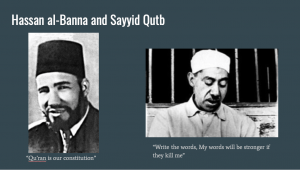My program in Spain gave us two different options for how we wanted to take classes. We could either take spanish culture and language classes at the Universidad de Sevilla or take business and economics classes at the study center. Most of the students at the Universidad de Sevilla are either spanish major or minors taking classes to fulfill their requirements. Since, I have a lot of economics classes to finish I chose to take classes at the study center instead. I do wish I was able to take classes at the spanish university, but it did not fit my schedule. Besides, no matter where we take classes they are only with Americans in the ISA program- which I was little surprised to find out. I wish we were able to connect more with the spanish students but alas- that is why I go to frisbee twice a week. There is also one other student from UMass Dartmouth at the study center and we are taking two different economics classes together. She is an accounting major so I didn’t know her very well at UMD, but I do know that her and her roommate are having some difficulties with their host mother being a little dramatic so I’m hoping that gets resolved for her soon!

I don’t have any photos of the Universidad de Sevilla but this is one of the Cathedral right next to it!
The ISA Center is run in coordination with the Universidad de Menendez Pelayo which is how all of my credits are able to transfer. Two of my teachers are from Spain but learned English in a different country, while the other is a native Sevillian. For example, my International Trade and Economics teacher is from Sevilla but learned English in England so he has a bit of a British accent. His class is at 6 pm Tuesdays and Thursday and by 4 o’clock Thursday the only thing people can think about is the weekend. On one of our Thursday classes less than half the class was there because most people had left Sevilla early to travel so instead of teaching us something relevant to economics he put on a 50 minute video about how the king of the UAE built three giant man-made islands to attract tourists. Even though I almost fell asleep multiple times it was honestly kind of fascinating (but definitely had nothing to do with international economics). After we finished watching the video we somehow got on the subject of cars and all of a sudden he was googling the Ferrari Amusement Park in the UAE and we were watching a video of it. I certainly feel much more informed about tourist attractions in the UAE, but can’t quite say the same about economics.

This is a photo of the UAE islands if you were wondering! They are completely man made.

This is my daily morning view from the balcony at the study center.
My favorite place at school is the balcony. After my morning spanish class I’ll head over to the balcony and sit there until the heat becomes too much to bear. Generally I can survive until 12:30, but after that I have to find somewhere else to sit or I’ll head home early for lunch. I have a pretty sizable gap between the end of my spanish class and my next classes which allows me to go on a run before lunch and study for afternoon tests/ do homework. This gap is such a different lifestyle to me. At UMD I’m always running from class to work to club meetings to frisbee practice and somehow eating meals between all that. In Spain I have a set time to each lunch and dinner and I’m usually not rushing from place to place (unless I wake up late from a siesta). I can admire this laid back lifestyle for a bit, but I have to admit that I’m glad it will only last for three months.
One of my more interesting professors teaches three different classes all of which me and three of my peers are taking. All of his quizzes are quite difficult and there’s a lot of information he spews at us during our two hour classes but I am learning a lot. His classes are about the Middle East, the European Union, and migration trends all of which I only know very basic information about. Not only are the classes themselves interesting but I like that I’m learning about these topics from a different perspective than the one I would hear in the US. Learning about the European Union from someone who has lived his whole life in the EU is enlightening and his first hand experience is helpful in understanding the EU. For the migration trends class he is bringing in speakers who either worked with migrants and refugees or are refugees which is another great way to learn from someone who has experienced what we’re talking about in class directly. For me, the fact that I’m able to learn so much new information in such a short time frame is incredibly exciting and I can’t wait to see how the rest of his classes go. 

These two presentations are from my classes with Javier (the teacher I mentioned above). The left is from my Middle East class and the right is from the European Union class.
Leave a Reply